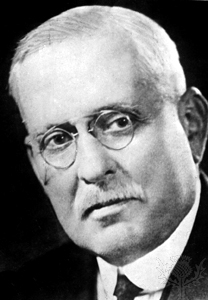Samuel Insull died at the age of 78 in the Paris subway on July 16, 1938. He was a remarkable man. He started his career as the stenographer for Thomas Edison and later in 1892 became head of Commonwealth Edison in Chicago. He broke with his mentor and established an alternating current system which Edison opposed and George Westinghouse and Nicolas Tesla supported. Insull had a business plan that did not concentrate on serving the wealthy at a high price. Instead, the plan focused gaining a large number of customers at a low price to match the low incremental cost of supplying electricity. His product lines included natural gas utilities and interurban railroads. The latter increased the use of electricity in the off-peak hours when the power was not being used for illumination.
He was a brilliant business man but he also contributed to the Chicago community. He led the building of the Civic Opera House that was completed in 1929 at the beginning of the Great Depression. He earlier led the relief effort for the victims of the 1915 Eastland disaster where 844 workers of Western Electric died. He also contributed to several hospitals and to Afro-American charities.
Despite Insull’s many contributions he lost his empire. The story behind Insull’s financial demise is fascinating and has parallels with recent business downfalls like Enron. Insull decline began with his effort to pass on the leadership of the utility holding company to his son. At the time, Insull did not own enough shares to complete the transition. One of the major shareholders was Canadian Cyrus Eaton who lived in Cleveland. Eaton was an interesting man. He was a friend of John D. Rockefeller who established the Standard Oil Trust and also lived in Cleveland at the time. Eaton was later given the Lenin Peace Prize in 1960 by Soviet Premier Nikita Khrushchev. When Insull sought to buy out Eaton, Insull went to the House of Morgan in the early 1930s to get a loan. Insull put up his own shares of the holding company as collateral. At the same time Insull had attracted the animosity of Harold L Ickes who in 1933 became Secretary of the Interior under President Franklin D. Roosevelt. Seeing that Insull was vulnerable, the House of Morgan instituted a takeover effort that was similar to the successful taking of Edison Electric in 1892 from Thomas Edison and forming what is now General Electric Company.
This is how the Commonwealth Edison takeover was done. The House of Morgan began to float rumors that Commonwealth Edison holding company was in financial difficulty. That drove the share price down, requiring Insull to put up more of his shares for collateral. This cycle was repeated several times until the holding company for forced into bankruptcy. This was an early example of a “run on the bank” that later hit Enron in 2001 and eight other companies in 2008. It should be noted that while the holding company went bankrupt, none of the individual utility companies went bankrupt. Indeed most had stable share prices during the period. Since the House of Morgan was the principal creditor of the Commonwealth Edison holding company, it took possession of the surviving holding company. The resulting hue and cry over the crash in the share price in 1933, led to a trial in 1934. Insull was not convicted, but the “run on the bank” cost him most, but not all of his fortune.
When Insull’s dead body was discovered in the Paris Metro no money or identification was found. This led the press to conclude that Insull died penniless and unknown. But Historian Forrest McDonald reports that Insull’s networth at the time was on the order of $10,000. While this sum was less than his peak earnings, it was a substantial sum at the depth of the depression. Moreover Insull was in the habit of carrying the equivalent of several thousand dollars on his person. McDonald conjectures that the cash was stolen by a thief or by the police. He concludes “again Insull was robbed and nobody got the story right.”





